Detecting elevated skin temperature from a distance, without physical contact, has obvious advantages for both patients and practitioners--thus the rise in the use of spot meters and thermal cameras. The Calibir GX infrared camera can be combined with 3rd party components and software in systems for detecting elevated skin temperature. Such systems are intended for initial body temperature assessment for triage use and provide benefit to both health care providers and the general public during the public health emergency.
Although the stereotypical test point has always been the forehead, best practice for temperature sampling 1,2,3 identifies the interior of the ear hole or the inner canthus of the eye (near the corner of the eye beside the nose) as the most accurate sites to test.
If you want to test from a distance, the face is much more accessible than the interior of the ear hole. For the face, spot meters are problematic: temperature varies across the face, so a single point might be an outlier while an average of a larger area can obscure important detail. Accuracy can also vary with distance.
A full-face imaging approach using thermal (long wave infrared) cameras has the potential to be more accurate, consistent, and thorough than a single point sampling approach. It also has the potential for higher throughput (more people screened more quickly). A thermal image can include a temperature reference (from a black body radiator for example) in the scene for much higher accuracy and reliability, and an automated imaging system can free hands to do other important tasks.
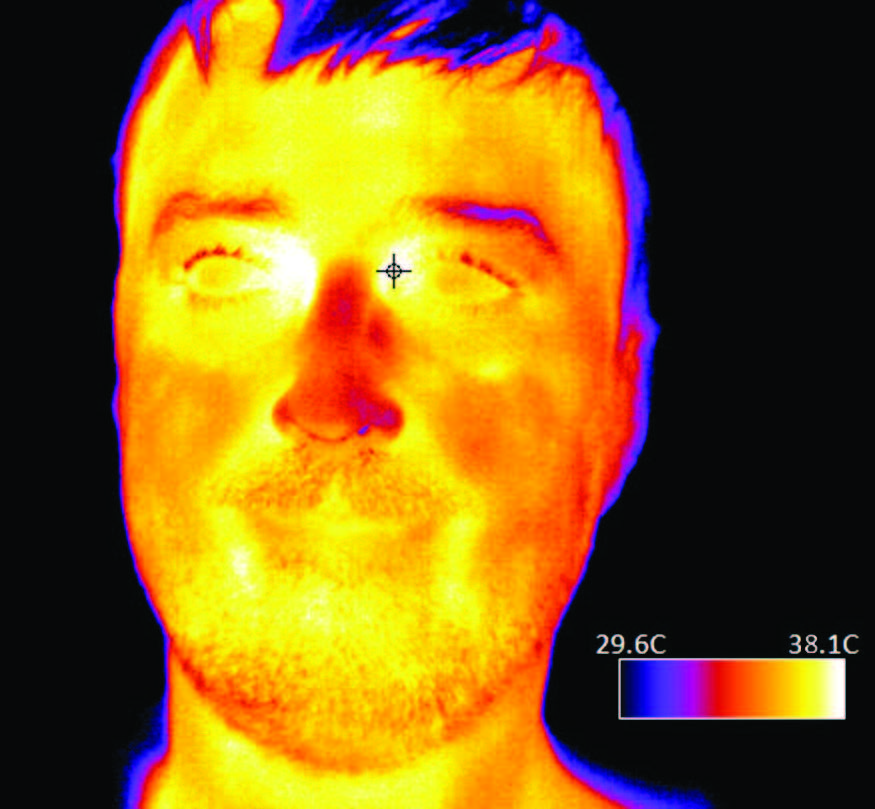 Thermal imaging reveals hot spots. The ear and the inner canthus of the eye are the best places to test, and the inner canthus of the eye is much more accessible (although it requires removal of eyeglasses)
Thermal imaging reveals hot spots. The ear and the inner canthus of the eye are the best places to test, and the inner canthus of the eye is much more accessible (although it requires removal of eyeglasses)
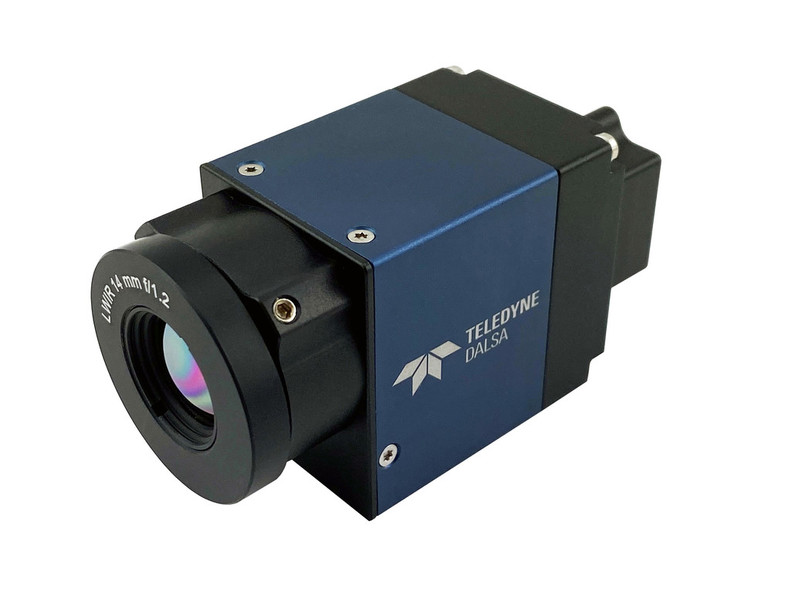
Teledyne DALSA's Calibir GX infrared camera platform offers powerful performance, as part of an imaging system, for critical applications like temperature screening. With great sensitivity and precision, outstanding dynamic range for wide temperature coverage, and factory-calibrated radiometric performance, Calibir delivers accurate, repeatable temperature data. Calibir GX uses Teledyne's own microbolometer detector and 21-bit ADC design for robust, reliable thermal imaging.
Calibir is supported by our Sapera and CamExpert software, providing power, control and flexibility in developing imaging applications.
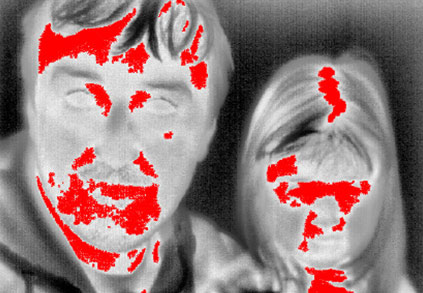
Calibir GX and its control software allow you to set your own LUTs (look up tables); with this control, you can mark certain temperatures with color while leaving the rest monochrome. For example, show everything between 38 and 41°C as red.

Calibir GX supports a smart frame averaging feature that can be tuned to minimize read noise according to your tolerance to movement, allowing any detection system to reach extremely low NETD values.
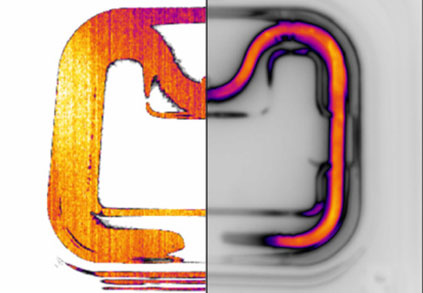
The details in this thermal image of an electric heater element shows Calibir GX's exceptional range (right) compared a third party detector (left). With a temperature range over 1500°C with consistent NETD <0.05°C, enabled by our advanced 21-bit ADC, Calibir GX offers unprecedented radiometric detail. For much smaller temperature ranges (e.g. 25°C to 45°C), Calibir GX can output an 8 bit (sub)range of values for convenient integration that still has 21-bit precision and accuracy.
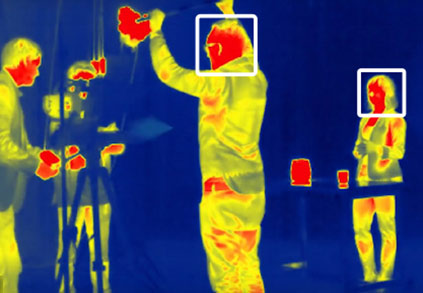
Up to two Regions Of Interest (ROIs) can be defined inside the camera: size, location, and the Min/Max/Average temperatures in each ROI can be displayed as well as the Min/Max/Average indication on the entire image. All this information is available in an easy metadata protocol that can be used to launch alerts or to combine with other types of image sensor (like visible CMOS sensor for identification for example). Metadata with ROIs temp information can be added to the image buffer.
Calibir GX has nonuniformity correction and is factory calibrated with a proprietary flux/temp base algorithm to account for Planck’s Law (also known as black-body law, it describes how IR flux from an object does not change linearly with object temperature). The result is camera output that is linear with IR flux, and each output color or grey level corresponds to an unique object temperature, simplifying your system.


Teledyne DALSA offers a range of thermal imaging solution. Check out our range of standard thermal products or ask us about custom capabilities.
[1] ISO. ISO TR 13154: Medical electrical equipment—Deployment, implementation and operational guidelines for identifying febrile humans using a screening thermograph. International Organization for Standardization; 2009.
[2] IEC/ISO. IEC 80601-2-59: Particular requirements for the basic safety and essential performance of screening thermographs for human febrile temperature screening. Geneva, Switzerland: International Electrotechnical Commission (IEC) / International Organization for Standardization (ISO); 2017.
[3] CDC. Non-Contact Temperature Measurement Devices: Considerations for Use in Port of Entry Screening Activities. 2014.
FDA Enforcement Guideline: Developers of Telethermographic Systems used for body temperature measurements for triage use during the duration of the COVID-19 public health emergency are advised to comply with the requirements set forth in FDA Enforcement Guideline: https://www.fda.gov/media/137079/download.
| Document | Type |
|---|---|
| Calibir GX Family Datasheet |
| Document | Type |
|---|---|
| Temperature Screening with Calibir GX |